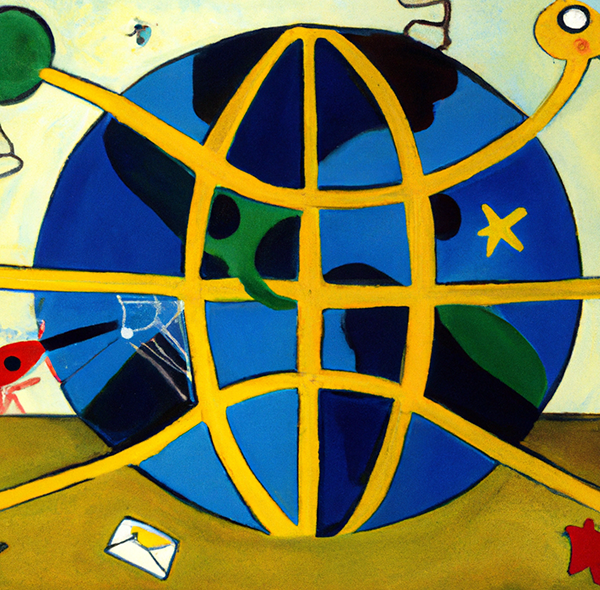
Hello, Dali
This year marks the 100th anniversary of the Surrealism movement. The movement that spawned Salvador Dalí, René Magritte, Joan Miró, and other artists whose prints festooned many a college student’s dorm walls (or maybe it was just us), came about as a response to World War I as well as the 1918 Spanish flu pandemic. (Interestingly, since the COVID pandemic, life has become fairly surreal, especially if you watch the news with any frequency.)
The term “Surrealism” was coined in 1917 by French writer and art critic Guillaume Apollinaire, but the movement itself was officially established in October 1924 with the publication of the Surrealist Manifesto by French poet and critic André Breton. Its goal, wrote Breton was to “resolve the previously contradictory conditions of dream and reality into an absolute reality, a super-reality”—or surreality. Adds Print magazine:
When a society is shaken to its core, artists are typically some of the swiftest to react, reflecting the greater unrest in their work. Back in the1920s, those artists included legends such as Salvador Dalí, René Magritte and Joan Miró, whose brilliant minds created alternate versions of reality unlike any envisioned before.
So we should be seeing some damn weird art before too long. Anyway, to celebrate the surreal centenary, 99designs by Vista held a global competition in which they invited graphic designers and other artists from their creative community to redesign modern-day logos in a Surrealist style.
As a graphic design marketplace encompassing 1.4 million creatives, many artists took on the challenge, but 99designs chose only 18 winners. The crowned designs interpret logos across industries, including social media platforms, consumer brands, tech and media companies, and even nonprofits.
Some of the chosen ones:
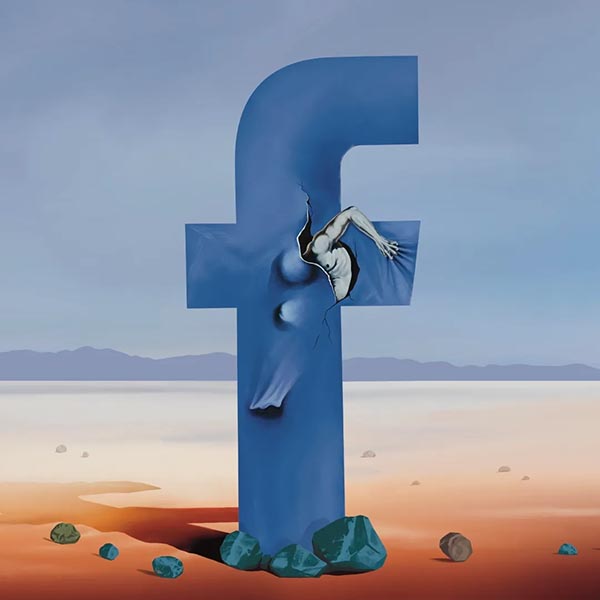
Facebook by Emgras, inspired by Salvador Dalí.

Apple by yuyunArts, inspired by M.C. Escher

Netflix by Yeh, inspired by René Magritte
Check out all the winners here.
Wikiprint
We have known people who prefer to print anything electronic (like email) before they will read it. (We once joked that a colleague of ours would print out spam just to throw it in the trash.) But what if someone wanted to print out all of Wikipedia? One estimate was that, without images, it would generate a book block of about 300 cubic meters. Of course, unless you went through the Herculean task of indexing it, it would be fairly useless as a reference.
But another problem is that you’d have to keep up with edits to Wikipedia—and it’s been estimated that there are 150,000 page edits per day—meaning you’d be printing another 300 cubic meters every month. How many printers would you need to keep up with the page volume?
Via Laughing Squid, Randall Munroe of xkcd explained what would happen if you wanted to print out all of Wikipedia, including every edit. Interestingly, you’d only need six printers.
I came up with an estimate of 300 cubic meters for a printout of the whole thing. By comparison, if you were trying to keep up with the edits, you’d print out 300 cubic meters every month. …a good inkjet printer might put out 15 pages per minute. That means you’d only need about six printers running at any given time to keep pace with the roughly 100 edits each minute…Six printers isn’t that many, but they’d be running all the time. And that gets expensive.
Of course, those would be desktop printers. What about production inkjet machines? “Time to print all of Wikipedia and keep up with edits” would be an interesting addition to an inkjet press spec sheet.
Speaking of Color
Looking for a good way to avoid productive work while also doing something vaguely graphic artsy? Here’s a neat online tool one can spend hours playing with: Text2Color. Basically, you type in a description of a color, and it finds a match.




Pyro Mania
We hope you had a happy Fourth of July. Via Core77, we discovered that apparently drone light shows are starting to supplant fireworks. Who knew? Hopefully they’re quieter (and less likely to terrify pets). However, Sky Elements, in one of those “you got your chocolate in my peanut butter moments,” decided to attach fireworks to drones.
They're calling these Pyro Drones, and say that "Sky Elements is the first US-based drone light show company to receive FAA approval to attach fireworks to drones.

By the way, if you have never seen a drone light show (and we haven’t), here is one that Sky Elements put on this year (pre-Pyro Drone).
Girls Talk
Whilst catching up on the U Series of British quiz show QI, we came across an interesting fact: new words in the English language are spreading faster than ever—thanks to teenage girls. We had to follow up on this and, via National Geographic:
When people think of word innovators throughout history, male writers likely come to mind. Shakespeare is credited with inventing more than 1,700 words, including “bedroom,” “courtship,” and “swagger.” Charles Dickens is said to have first used the words “butterfingers” and “doormat,” and Dr. Seuss reportedly came up with “nerd.”
But despite contributions from famous writers, historians say another group has an even greater impact on the development of language: teenage girls.
Not that we’re fans of many new words being coined:
Though Oxford University Press’ 2023 word of the year, “rizz,” meaning charm or charisma, was coined by a man, several runners-up, including “situationship” and “Swiftie” were inspired or first used by women. The term “goblin mode,” which refers to self-indulgent, lazy behavior, was Oxford’s 2022 word of the year and appears to have been first used by a woman on Twitter in 2009.
Of course, it’s not possible to determine who first used a word—and even in the case of Shakespeare, it’s really just the case that his works are the first recorded use of those words, which could have been well known to his audience. After all, they had to have some idea of what he was going on about. He wasn’t writing Finnegans Wake. Still:
But whether or not young girls invent new phrases, they are more likely to be early adopters of the latest lingo, says University of Toronto linguist Sali Tagliamonte. “They’re pushing changes forward.”
Why would this be?
There are a handful of possible reasons why girls lead lexical innovation. According to Gretchen McCulloch, author of Because Internet: Understanding the New Rules of Language
A book we highly recommend, by the way.
women tend to be more socially aware. They have larger social circles and may be exposed to more language diversity, she says. And because women tend to be caregivers, boys usually learn language from their mothers, whereas women and girls learn words from other women.
And it’s been true at least as far back as the 15th century. Adds Smithsonian:
But young women may have been the true linguistic revolutionaries of Shakespeare’s day. McCulloch [Gretchen again] notes that in the 2003 book Historical Sociolinguistics, University of Helsinki linguists Terttu Nevalainen and Helena Raumolin-Brunberg surveyed 6,000 letters from 1417 to 1681. They found that female letter-writers changed the way they wrote faster than male letter-writers, spearheading the adoption of new words and discarding words like “doth” and “maketh.”
… McCulloch argues that female teenagers are actually “language disruptors” — innovators who invent new words that make their way into the vernacular. “To use a modern metaphor, young women are the Uber of language,” she writes.
So you can log into an app and request a word?
Graphene Goes to War
Was it a good week for graphene news? It’s always a good week for graphene news! Graphene to be used in next-generation military footwear. From (who else?) Graphene-Info:
The program, SWIFT [Supporting Warfighters through Innovative Footwear Technologies], is offered by the HEROES (Harnessing Emerging Research Opportunities to Empower Soldiers) initiative and will see [Graphene Composites US] extend its patented GC Composite graphene and aerogel technology to develop ultra-lightweight, durable, insulative materials for use in extreme cold weather.
Lightweight, effective, and durable thermal insulation is essential for extreme cold weather training and operations. This industry-academia collaborative program seeks to bring new innovations and next generation footwear solutions to US Warfighters with significantly enhanced performance in terms of protection, comfort, durability, and/or weight reduction that can be manufactured in the USA.
“This Is No Good, We’re on Top of the Monument”
Alfred Hitchcock’s North By Northwest is one of the greatest movies ever made, and one of its most famous scenes is Cary Grant and Eva Marie Saint’s attempt to flee James Mason and Martin Landau by climbing down the face of Mount Rushmore. However, via Atlas Obscura, it turns out they could have just hidden in a secret chamber behind Abraham Lincoln’s head.
[Sculptor Gutzon] Borglum’s initial plan was to sculpt the outline of the Louisiana Purchase and inscribe it with the most important events between George Washington’s and Teddy Roosevelt’s presidencies. When that fell through, Borglum started in on a new, equally valiant endeavor. He wanted to create a Hall of Records to house important American documents for posterity.
So in 1938, workers began blasting out a 70-foot-long cavern. However, the government insisted Borglum finish the heads before continuing with the hall of records. After all, the carving of the heads had begun in 1927, so there were priorities. Borglum died in 1941 and his son finished off the heads (the original plan was to depict the presidents to their waists), and the Hall of Records project was abandoned.
The unfinished hall sat empty and untouched for decades. Then in 1998, 16 porcelain panels were placed inside the chamber. They describe the construction of the Mount Rushmore Memorial and why those presidents were chosen, and document a history of the United States. These are intended not for the general public, but as a time capsule for people of the distant future, as the sculptor intended.
Borglum had not really thought through his original project.
As for Borglum’s initial plan of an inscribed Louisiana Purchase sculpture, it was met with several obstacles. First, at the scale he intended it would have been impossible to sculpt the descriptions large enough for anyone to read. Second, Borglum had measured incorrectly when planning out the presidential heads (which is why Jefferson peeks out from behind Washington’s shoulder), and so Lincoln had to be pushed over to where the Louisiana Purchase was supposed to go.
“Low-res sculpture.” And would Cary Grant have had better luck getting purchase if he had climbed down it….
Plus: “I don’t like the way Teddy Roosevelt is looking at me.”

By the way, if you’re planning to visit Mount Rushmore, the Hall of Records is located on the top of the monument near the cliffs, so it’s not open to the public for safety reasons. (And James Mason’s house was just a matte painting.)
Hot Rails to Hell
Whilst taking an Amtrak trip during record heat recently, the conductor advised that the train was travelling more slowly than usual because hot temperatures cause the rails to expand, increasing the risk of a derailment. We looked this up, and it’s true. Via Grist:
One of the iconic sensory experiences of riding a train is actually the sound of ingenuity. As steel railroad tracks heat up, they grow: Eighteen hundred feet of rail expands by more than an inch for every 10 degrees Fahrenheit of temperature increase. So rails used to be laid down in sections — each between 30 and 60 feet long — with small gaps.
And those gaps are what cause that iconic train noise.
“The very specific railway noise that you hear — chuchat … chuchat … chuchat … chuchat … chuchat — is because there is a gap between the rails, and this gap is meant for such expansion,” said Dev Niyogi, who studies urban climate extremes at the University of Texas at Austin.
And when the temperature gets too high, even that strategy can’t compensate.
in a severe heat wave, the rail can swell until the underlying ties can no longer contain it. Then the rail gets visibly wavy, morphing into what’s known as a sun kink. That’s a serious hazard for trains, which can derail on misaligned tracks. In extreme cases, the track can violently buckle, going from a straight shot to grotesque curves almost instantly. So if it’s excessively hot out, rail services will slow their trains as a precaution, which provides less of the mechanical energy that can lead to buckling. Amtrak, for instance, restricts speeds to 80 miles per hour if the rail temperature hits 140 degrees.
So not only is climate change making air travel more harrowing now it’s making train travel more hazardous. Awesome.
As extreme heat waves get worse, more tracks will turn into sun kinks — disrupting commuter rail service that reduces carbon emissions and slows that warming. In 2019, a study estimated that the U.S. rail network could see additional delay costs totaling between $25 billion and $45 billion by the year 2100, in a scenario that assumed greenhouse gas emissions decline in the next 20 years.
Uh huh.
Of course, the term “sun kinks” immediately conjured up…
Taking A Fence
Do you like the view from your home, but sometimes wish you had a privacy fence? Well, via Core 77, you can have it both ways, with a privacy fence that appears at the push of a button. Polish architect Robert Konieczny and his company KWK Promes had a unique client request:
“[The client] wanted to live in a quiet area, on the outskirts of a German village near Bremen. The plot is located in the vicinity of a forest, which became its great asset; however, due to cyclical sports events in the area, the secluded location turns into a place full of random people.”
Would a bike race be a cyclical sports event? Anyway, we continue.
A privacy fence would spoil the view, and the lack of one would spoil the privacy. The solution is a must for any Bond villain’s lair.

The fence slides out in two pieces from either side and meets up in the middle.
Interesting idea. If you have neighbors, and the fence suddenly goes up, they could well be thinking, “Hmm, what’s he up to?”
Blue World
From Xitter:
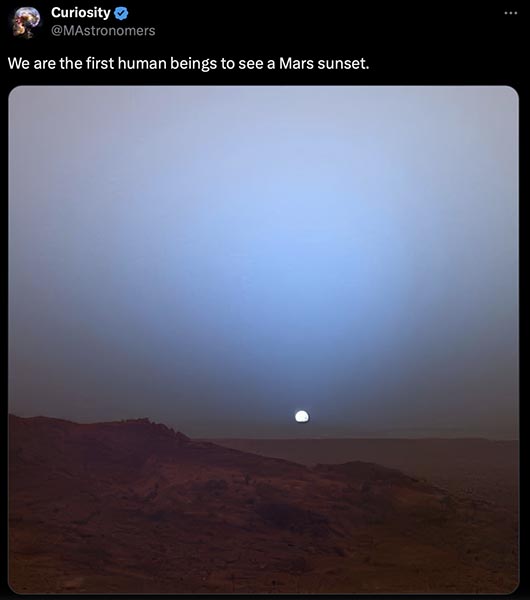
But if Mars is the Red Planet, why are its sunsets blue? Says NASA:
Just as colors are made more dramatic in sunsets on Earth, Martian sunsets would appear bluish to human observers watching from the Red Planet. Fine dust makes the blue near the Sun’s part of the sky much more prominent, while normal daylight makes the Red Planet’s familiar rusty dust color more prominent.
“The colors come from the fact that the very fine dust is the right size so that blue light penetrates the atmosphere slightly more efficiently,” said Mark Lemmon of Texas A&M University, College Station, a science team member of the Curiosity rover mission. “When the blue light scatters off the dust, it stays closer to the direction of the Sun than light of other colors does. The rest of the sky is yellow to orange, as yellow and red light scatter all over the sky instead of being absorbed or staying close to the Sun.”
It's similar to the reason the sky on Earth is blue. Here, that occurs due to Rayleigh scattering—the scattering of light due to atmospheric particulates that are smaller than the wavelength of the radiation (light). On Mars, Rayleigh scattering is very weak, but the red color of the atmosphere is due to Mie scattering— the scattering of light due to atmospheric particulates that are similar to or larger than the wavelength of the radiation.
Here is an experiment using milk and water you can do at home to see the difference.
Around the Webb, Part the Infinity: The Eyes Have it
Looks like the James Webb Space Telescope is celebrating the 100th anniversary of Surrealism. Via LiveScience, the scope has turned its, uh, eye toward exoplanet LHS-1140b, located 50 light years from Earth. Discovered in 2017, it was originally thought to be a “mini-Neptune” with a dense atmosphere of water, methane and ammonia.
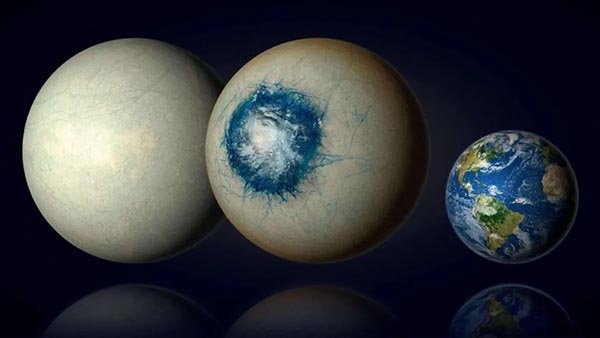
However, new findings suggest that iris-like structure could be an ocean surrounded by solid ice—making it potentially habitable world.
“Of all currently known temperate exoplanets, LHS-1140b could well be our best bet to one day indirectly confirm liquid water on the surface of an alien world beyond our Solar System,” first author Charles Cadieux, an astrophysicist at the University of Montreal, said in a statement. “This would be a major milestone in the search for potentially habitable exoplanets.”
The findings will be published in The Astrophysical Journal Letters and available on the preprint server arXiv.
If life is found here, please, oh, please name them the Residents.
It’s the End of the World As We Know it (And I Feel Hungry)
Sure that the Doomsday is upon us? Prepping for the Apocalypse? If so, Costco has you covered. Via Food & Wine, Costco is now selling an “Apocalypse Dinner Kit”—it comprises 150 meals, is said to last for 25 years, and only goes for $99, coincidentally the name number of luftballoons in the 1983 Nena hit about a cataclysmic war. Anyway:
on its online shop, it lists a massive 150 servings of that same food Eisner listed, including 12 servings of Pasta Alfredo and Cheesy Macaroni, six servings of Teriyaki Rice, Creamy Pasta and Vegetables, Potato Pot Pie, Tomato Basil Soup with Pasta, and Chicken Noodle Soup, and 12 more servings of Brown Sugar & Maple Multi-Grain, and Apple Cinnamon Cereal. There are also six servings of Crunchy Granola, 10 servings of White Rice, 16 servings of Vanilla Pudding, 24 servings of Whey Milk Alternative, and 16 servings of Orange Drink.
What, no Twinkies? Heck, those would last much longer than 25 years. Of course, you’ll certainly want to eat healthy during, you know, the Apocalypse.

All you need to do to eat these freeze-dried foods is add water and, voila, a tasty meal even during a zombie uprising. But this isn’t the only emergency-ready food Costco has available. It also has products like the Mountain House Asian Inspired Freeze Dried Kit, which comes with 48 servings of freeze-dried food for $179, and the Mountain House Cooked Ground Beef set, which comes with a whopping 132 servings. And much, much more, so you can fully stock up your bunker and be the place to be when stuff really hits the fan.
As comedian Steven Wright once said, “I bought some powdered water, but I don’t know what to add.”
This Week in Printing, Publishing, and Media History
July 1
1874: The Sholes and Glidden typewriter (aka Remington No. 1), the first commercially successful typewriter, goes on sale.
1881: The world’s first international telephone call is made between St. Stephen, New Brunswick, Canada, and Calais, Maine, United States.
1892: American journalist and author James M. Cain born.
1963: ZIP codes are introduced for United States mail.
1979: Sony introduces the Walkman.
1869: American author and educator, and co-author of The Elements of Style, William Strunk Jr. born.
July 2
1566: French astrologer and author Nostradamus dies (b. 1503). (Funny, he didn’t see it coming.
1698: Thomas Savery patents the first steam engine.
1897: British-Italian engineer Guglielmo Marconi obtains a patent for radio in London.
1900: The first Zeppelin flight takes place on Lake Constance near Friedrichshafen, Germany.
1900: Jean Sibelius’ Finlandia receives its première performance in Helsinki with the Helsinki Philharmonic Society conducted by Robert Kajanus.
1961: American novelist, short story writer, and journalist, Nobel Prize laureate Ernest Hemingway dies (b. 1899).
1962: The first Walmart store, then known as Wal-Mart, opens for business in Rogers, Ark.
1977: Russian-born novelist and critic Vladimir Nabokov dies (b. 1899).
2013: American computer scientist, inventor of the computer mouse Douglas Engelbart dies (b. 1925).
July 3
1767: Norway’s oldest newspaper still in print, Adresseavisen, is founded and the first edition is published.
1877: German-born Swiss poet, novelist, painter, and Nobel Prize laureate Hermann Hesse born.
1886: The New-York Tribune becomes the first newspaper to use a linotype machine, eliminating typesetting by hand.
1883: Czech-Austrian author Franz Kafka born.
July 4
1804: American novelist and short story writer Nathaniel Hawthorne born.
1826: John Adams, 2nd President of the United States (b. 1735), and Thomas Jefferson, 3rd President of the United States (b. 1743), both die on the same day.
1831: American soldier, lawyer, and politician, 5th President of the United States James Monroe dies (b. 1758).
1855: The first edition of Walt Whitman's book of poems, Leaves of Grass, is published In Brooklyn.
1950: Radio Free Europe first broadcasts.
1883: American sculptor, cartoonist, and engineer Rube Goldberg born. It was a needlessly complicated birth.
July 5
1687: Isaac Newton publishes Philosophiæ Naturalis Principia Mathematica.
1833: French inventor, creator of the first known photograph Nicéphore Niépce dies (b. 1765).
1954: The BBC broadcasts its first television news bulletin.
1958: American author and illustrator Bill Watterson born.
July 6
1865: The first issue of The Nation magazine is published.
1893: French short story writer, novelist, and poet Guy de Maupassant dies (b. 1850).
1962: American novelist and short story writer, Nobel Prize laureate William Faulkner dies (b. 1897).
July 7
1752: French weaver and inventor, inventor of the Jacquard loom Joseph Marie Jacquard born.
1907: American science fiction writer and screenwriter Robert A. Heinlein born.
1928: Sliced bread is sold for the first time (on the inventor's 48th birthday) by the Chillicothe Baking Company of Chillicothe, Missouri. At the time, it was said to have been the greatest thing since...hmmm…
1930: British writer Arthur Conan Doyle dies (b. 1859).
July 8
1822: English poet and playwright Percy Bysshe Shelley dies (b. 1792).
1889: The first issue of The Wall Street Journal is published.
1947: Reports are broadcast that a UFO crash landed in Roswell, N.M., in what became known as the Roswell UFO incident.
July 9
1901: Prolific English author Barbara Cartland born. She published 722 novels and holds the Guinness World Record for the most novels written in a single year (23 in 1976). When she died in 2000, the paper industry went into a severe recession.
1911: Decidedly less prolific English author and illustrator Mervyn Peake born.
1945: Decidedly more prolific author (but nowhere near Cartland’s output), Dean Koontz, born.
July 10
1851: French photographer and physicist, inventor of the daguerreotype Louis Daguerre dies (b. 1787).
1856: Serbian-American physicist and engineer Nikola Tesla born.
1863: American author and educator Clement Clarke Moore dies (b. 1779).
1871: French novelist Marcel Proust born. In Remembrance of Things Past, he probably wrote as many words in one novel as Cartland wrote in 722.
1888: Greek-Italian painter and set designer Giorgio de Chirico born.
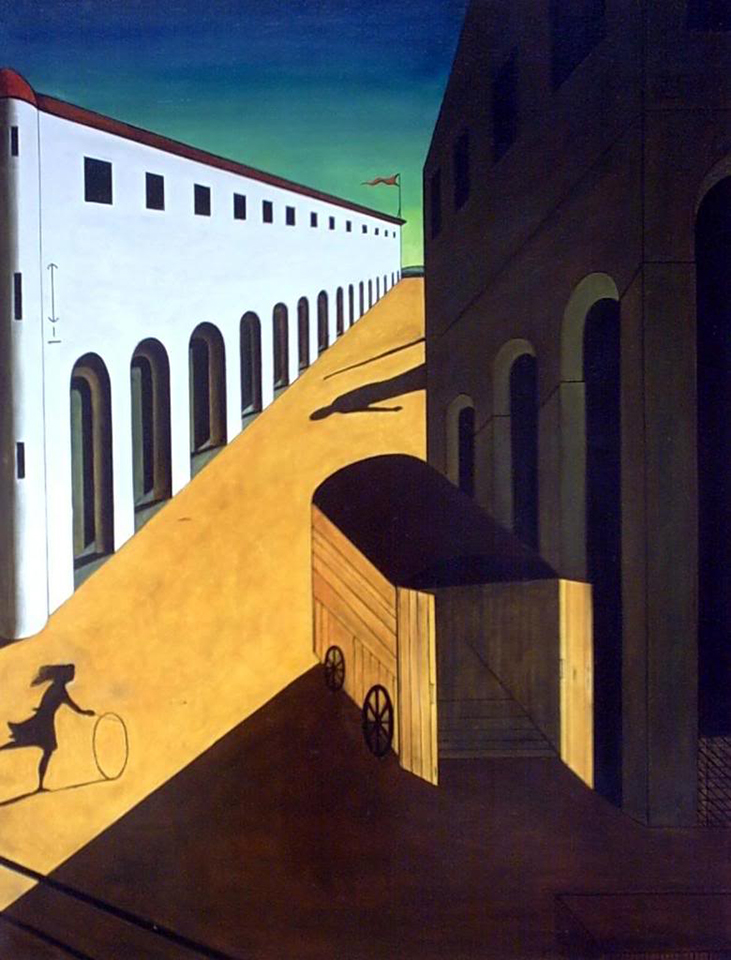
1962: Telstar, the world’s first communications satellite, is launched into orbit.
1978: ABC World News Tonight premieres.
2008: Apple’s AppStore opens.
July 11
1804: He did not throw away his shot: U.S. Vice President Aaron Burr (spoiler alert) mortally wounds Alexander Hamilton in a duel.
1899: American essayist and journalist E. B. White born.
1927: American-Canadian physicist and engineer, inventor of the laser, Theodore Maiman born.
1960: To Kill a Mockingbird by Harper Lee is first published in the United States.
July 12
1493: Hartmann Schedel’s Nuremberg Chronicle, one of the best-documented early printed books, is published.
1580: The Ostrog Bible, one of the early printed Bibles in a Slavic language, is published.
1804: American general, economist, and politician, 1st United States Secretary of the Treasury Alexander Hamilton dies (b. 1755).
1817: American essayist, poet, and philosopher Henry David Thoreau born.
1854: George Eastman, founder of Eastman Kodak, born.
July 13
1793: Journalist and French revolutionary Jean-Paul Marat is assassinated in his bathtub by Charlotte Corday, a member of the opposing political faction.
1956: The Dartmouth workshop is the first conference on artificial intelligence.
1985: The Live Aid benefit concert takes place in London and Philadelphia, as well as other venues such as Moscow and Sydney.
July 14
1798: The Sedition Act becomes law in the United States making it a federal crime to write, publish, or utter false or malicious statements about the United States government.
1853: Opening of the first major US world’s fair, the Exhibition of the Industry of All Nations in New York City.
1910: American animator, director, producer, actor, and co-founder of Hanna-Barbera William Hanna born.
1912: American singer-songwriter and guitarist Woody Guthrie born.
1965: The Mariner 4 flyby of Mars takes the first close-up photos of another planet.
1974: British comedian David Mitchell born.
2015: NASA’s New Horizons probe performs the first flyby of Pluto, and thus completes the initial survey of the Solar System.




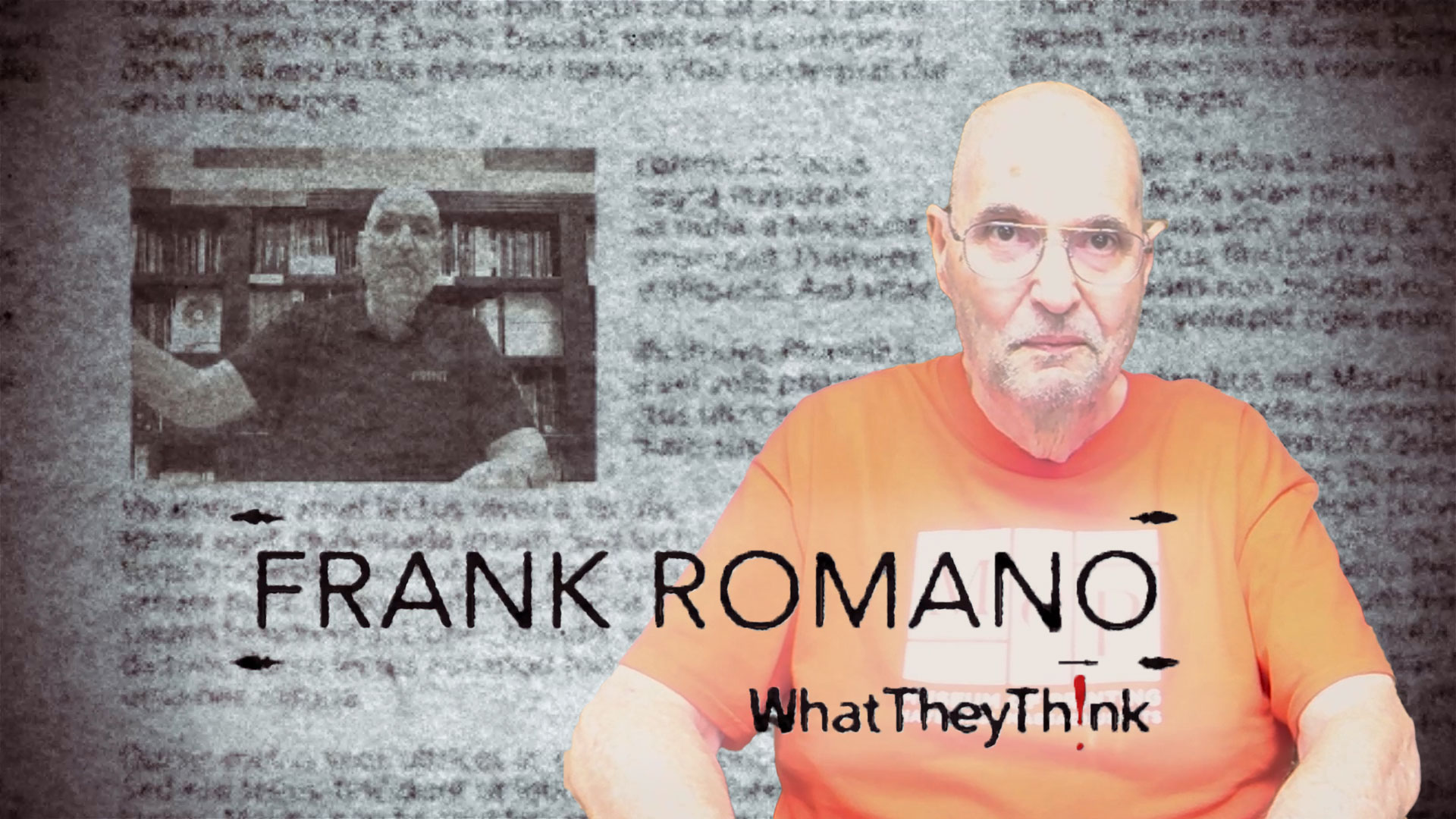






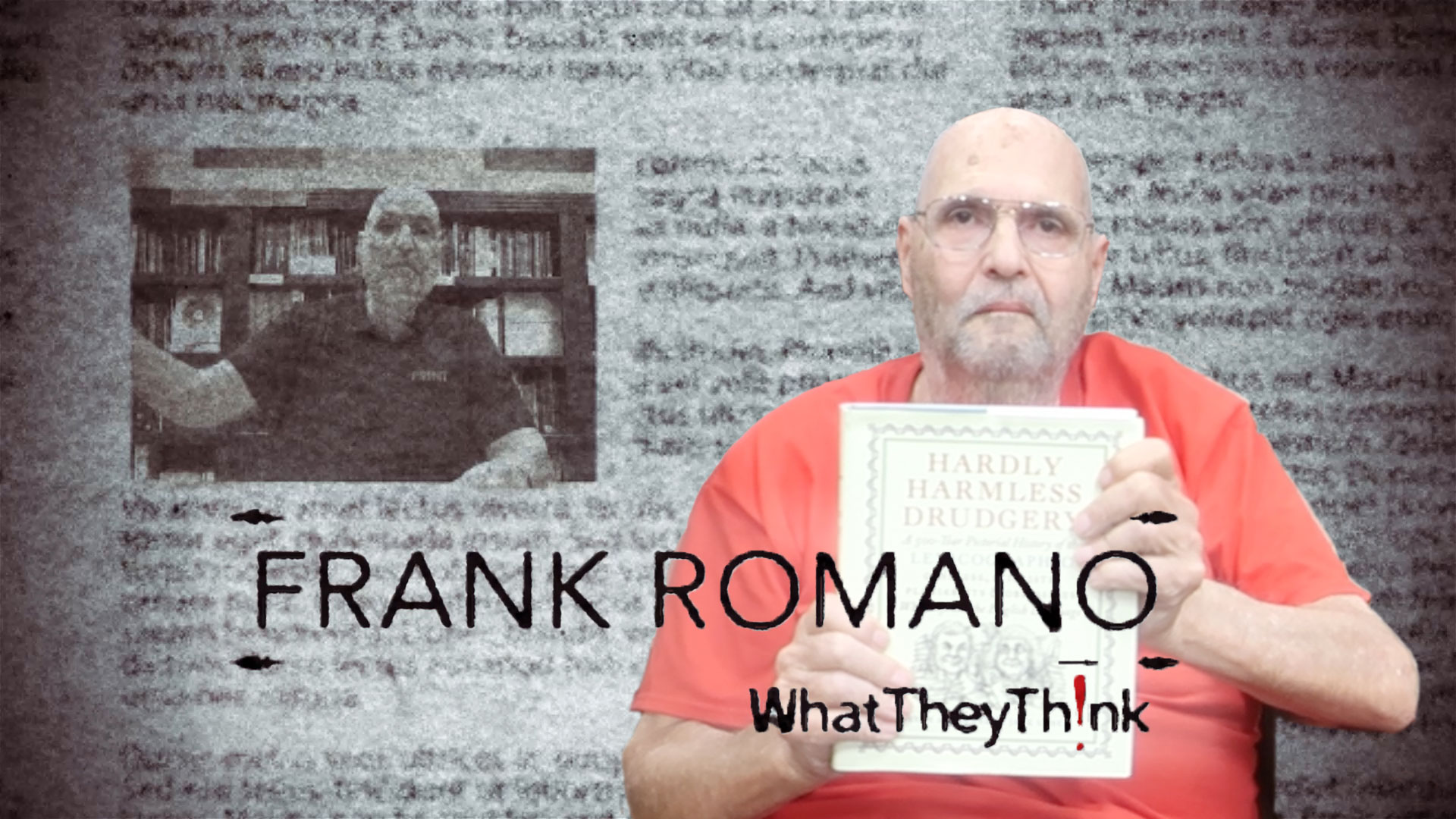



Discussion
Only verified members can comment.